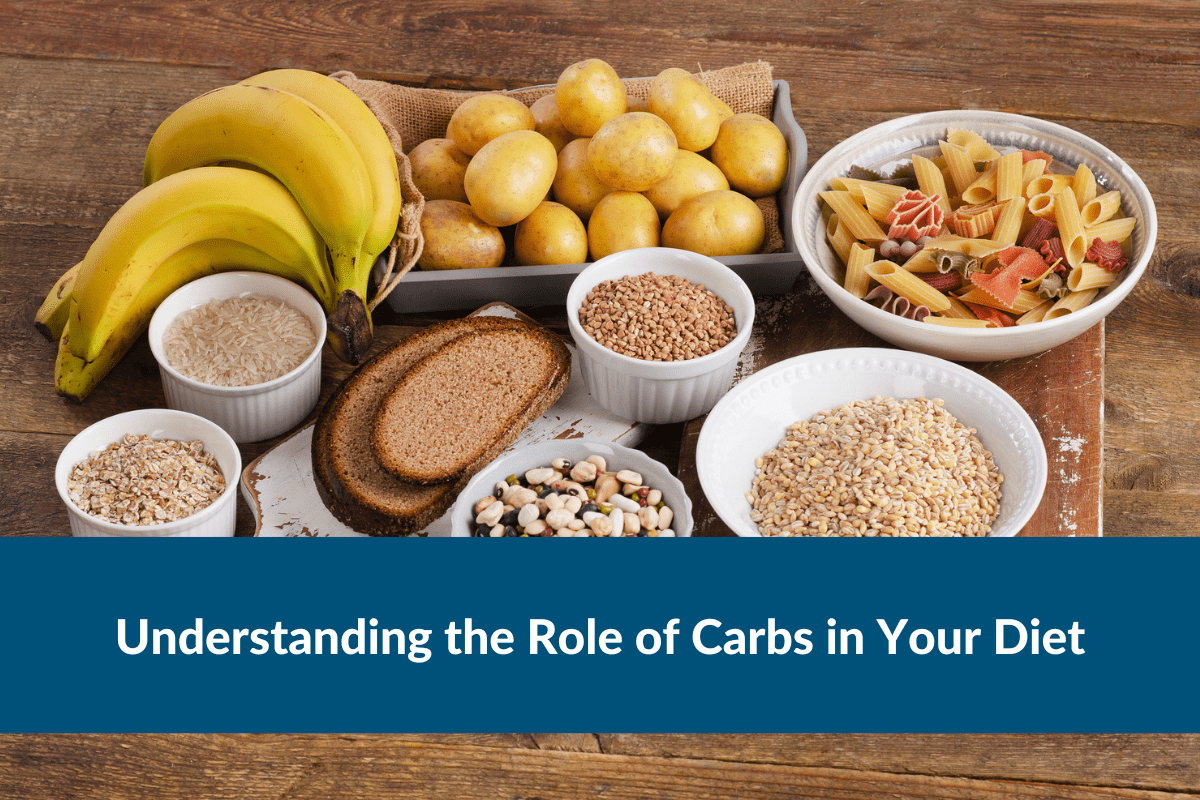Understanding the Role of Carbs in your Diet
This post was reviewed by our Director of Clinical Excellence and Oversight.
Has your doctor advised you to eat fewer carbohydrates (carbs)? Maybe your A1C—a measure of blood sugar over time—is indicating diabetes, or pre-diabetes? Or you might just be trying to lose a few pounds. Whatever the reason, it’s probably a bit painful to imagine life without pasta, bagels, and potatoes. Worry not—we’re here to ease your pain!
Here’s the thing. Just because you’re minding carbs does not mean you’ve eaten your last sandwich. And that special occasion chocolate layer cake? You bet you can.
The key is understanding the role of carbs, where they come from, and how to strike a balance between what you need for good health, and what you want for good taste. Let’s dig in.

Some Simple, Some Complex
Foods contain three essential types of macronutrients—carbs, protein, and fat. Our bodies, clever machines that they are, turn carbs into glucose (sugar) to provide energy. As the level of sugar rises, the pancreas secretes insulin to send the sugar into the cells to provide energy.
Simple carbs, like that slice of cake we mentioned, get digested quickly and send an immediate burst of glucose into the bloodstream. Not all simple carbs are found in sugary foods like cake, candy, and soda, however. Though they are more nutritious, fruit and cow’s milk are also simple carbs and should be enjoyed in moderation. Too many simple carbs can increase the risk of diabetes, heart disease, high cholesterol, and weight gain.
Complex carbs, like oatmeal and whole grain bread, are not digested as quickly, sending glucose more slowly into the bloodstream. Other examples of complex carbs are peas, beans, brown rice, and vegetables.
Many nutritionists suggest avoiding refined carbs like white bread and white rice. Instead they suggest you choose healthy fats like avocado oil and olive oil that can help your body manage glucose levels.
Restaurant meals are known for huge portions of carb-heavy sides. Instead of the starch that comes with your meal, ask for extra veggies.
More Green Beans, Less Granola
The right carbohydrates in the right amount are an important part of most diets. Reducing carbs can help some people manage pre-diabetes or diabetes. You may have heard of popular diets that radically reduce carbs. Check with your healthcare provider before trying any of these.
Here are 10 tips for cutting carbs that won’t leave you hungry or feeling deprived.
- Rethink your drink. Sugar-sweetened sodas, teas, fancy coffees, and energy drinks can pack a ton of carbs. Try flavored seltzers instead.
- Shoo the sugar. Sugar should be limited to 6 teaspoons a day for most women, and 9 teaspoons for most men. If you have diabetes and are taking medication, talk to your doctor about the amount of sugar that’s safe for you.
- Divide and conquer. Picture a plate divided into quarters. Two of those quarters, or half the plate, should be filled with produce. Fill one quarter with whole grains, and the remaining quarter with lean protein like meat, fish, beans, or eggs.
- Unjuice your morning. Fruit juice is often high in fructose, which is considered a simple carb. Compared to whole fruit, juice offers little nutritional value.
- Re-build breakfast. Start the day with high-protein choices like eggs, plain nonfat yogurt, or low-carb toast and nut butter.
- Select better sides. Restaurants are known for huge portions of carb-heavy sides. Instead of the starch that comes with your meal, ask for extra veggies.
- Find your flour. White flour is a refined grain, so it has less fiber and gets digested quickly. Carb-smart alternatives include whole grain, almond, or coconut flour.
- Vet your veggies. Though all vegetables are sources of nutrients, stick to non-starchy choices like broccoli, artichokes, and mushrooms.
- Pack the protein. Protein helps you feel full and may help you eat less throughout the day. Good sources, include chicken, fish, beans, eggs, lean beef, and pork.
- Add an app. There are many good nutrition tracking apps out there that help you count carbs and other nutrients.
Now You’re Cooking!
A great way to make changes to your diet is to prepare your own food. That way you know exactly what you’re eating. You don’t have to be a gourmet chef to come up with tasty low-carb meals that won’t leave you begging for bread.
For example, common breakfast foods can turn your meal into a carb-o-rama. Check out these ideas for changing up your first meal of the day:
Spinach and cheese omelet. Once you gather your ingredients, it actually takes about the same amount of time to make this healthy omelet as it does to run a bagel through the toaster!
Smoothies for the win. Choose ingredients like almond milk, berries, chia seeds, and kale.
In a hurry? Keep it simple with apple slices and peanut butter. Or drop blueberries into a cup of nonfat plain Greek yogurt.
On weekend mornings when you’ve got a little more time, try this recipe for low-carb pancakes. It’s a winner!
- 1 cup almond flour
- 1.5 tsp. baking powder
- 1 T. sugar alternative
- 1 tsp. salt
- ¼ cup almond milk or water
- 2 eggs, beaten
- 1 tsp. vanilla extract
Whisk together flour, baking powder, salt, and sugar alternative. In another bowl, beat the milk, eggs, and vanilla. Combine until smooth without over-mixing. Drop spoonfuls onto a prepared griddle; flip when the edges brown (that’s the best part). Serve warm with a little melted butter on top!

Not all simple carbs are found in sugary foods like cake, candy, and soda. Though they are more natural and more nutritious, fruit and cow’s milk are also simple carbs and should be enjoyed in moderation.
Indulge Smartly
If you’re taking steps to improve your health and nutrition, or keeping an eye on your blood glucose levels, managing carbs can be a smart place to start. Talk with your doctor before making any significant change in your diet, especially if you have diabetes, or pre-diabetes and take medication. Once you know the number of grams of carbs you should eat each day, you can keep things in balance. Dreaming of a blueberry muffin? You may be able to have it if you choose fish instead of pasta for dinner.
Disclaimer:
Unless otherwise noted, the recommendations in this document were obtained from the sources indicated. Be advised that information contained herein is intended to serve as a useful reference for informational purposes only. HCD cannot be held responsible for the continued accuracy of or for any errors or omissions in the information. All trademarks and registered trademarks are the property of their respective owners.

